Persian Silk Tree: Grow & Care for (Albizia Julibrissin)
Written by Iris
Sep 07 2021
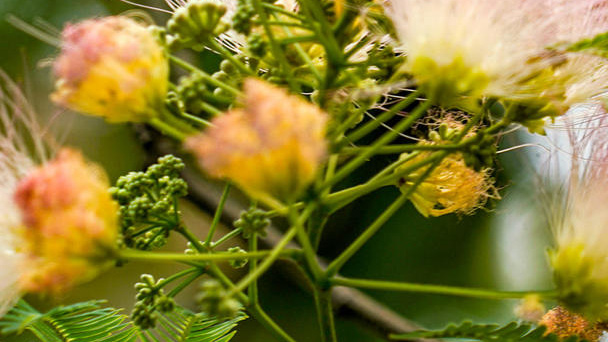
The flower of Persian Silk Tree (Albizia Julibrissin) is pink, the flower shape is like a small fan, and it is fluffy. Persian Silk Tree is not only beautiful in flower shape, but also in flower language: it symbolizes eternal love, pairwise confrontation, and is a symbol of marriage between husband and wife. Let's learn how to grow and care for Persian Silk Tree.
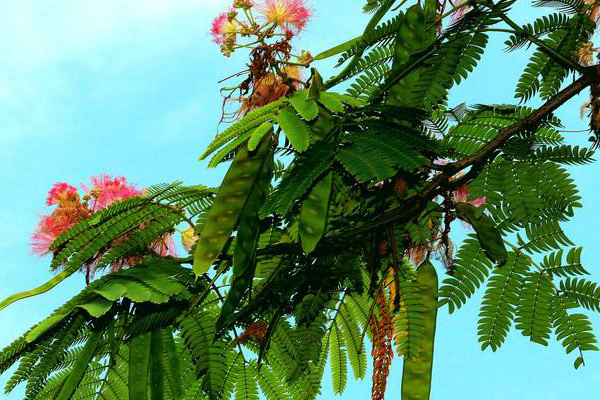
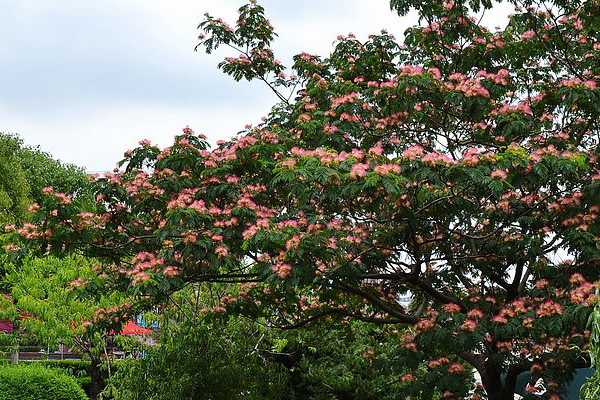
Letting its branches spread freely is what will give it the most beautiful stature. Persian Silk Tree naturally grows to form an umbrella-like shape that it is best not to try to control.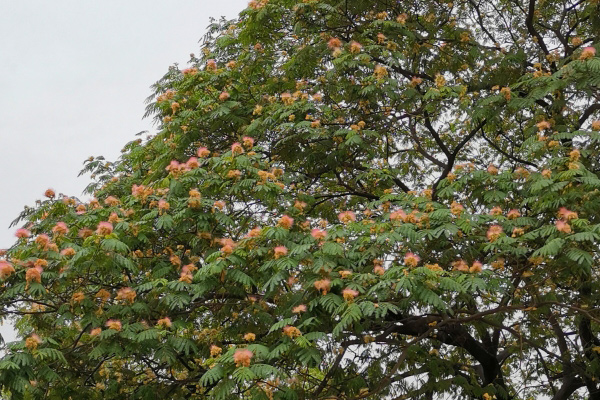
Persian silk trees are susceptible to mimosa wilt, which is caused by a fungal disease called Fusarium oxysporum f. sp. pernisciosum. The fungus destroys the vascular system in the tree. Leaves often appear yellow but may still hold some of their green color. They wilt, shrivel, dry out and fall. Diseased trees often die within a year. Persian Silk Tree in young and mature trees cannot be controlled, notes University of Nebraska-Lincoln. Fungicides thiabendazole and benomyl may control but not completely eliminate the disease. Mimosa wilt may spread to and affect adjacent, root-grafted trees.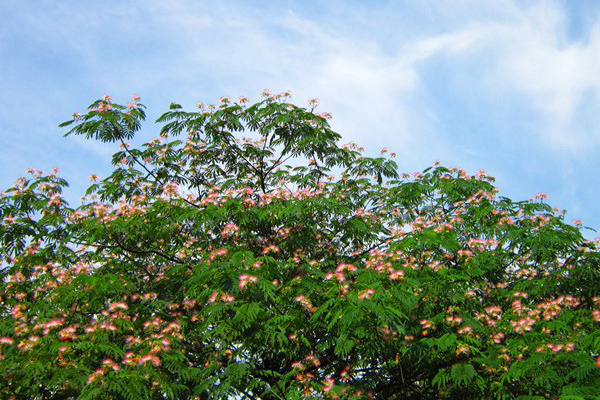
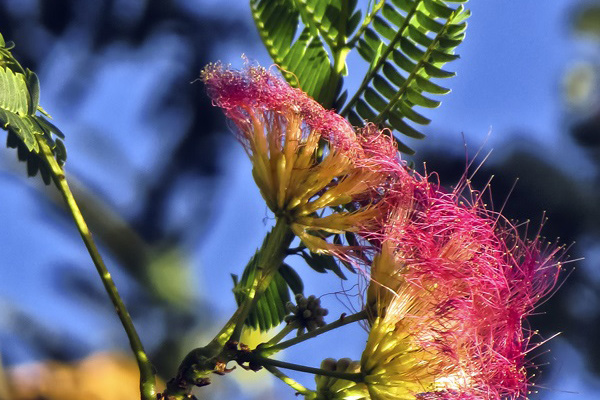
How to Choose and Prepare a Planting SiteWhen to Grow Persian Silk TreeHow to Grow & Care for Persian Silk TreePersian Silk Tree Care - LightPersian Silk Tree Care - SoilPersian Silk Tree Care - WaterPersian Silk Tree Care - Temperature & HumidityPersian Silk Tree Care - FertilizerPersian Silk Tree Care - PruningPersian Silk Tree Care - Pests & DiseasesHow to Propagate Persian Silk Tree Persian Silk Tree Propagation with SeedsPersian Silk Tree Propagation with Branch Cuttings
How to Choose and Prepare a Planting Site
For this one, you can easily grow persian silk tree in outdoor space like the backyard or put them in a pot, where you can easily put them on your deck, balcony, or terrace. The special thing is once the first flowers from Persian silk tree are unfurled, you will smell the lovely fragrance from it all over the surrounding area.
When to Grow Persian Silk Tree
The best time to grow Persian Silk Tree is by spring or in fall. persian silk tree (Albizia Julibrissin) needs a sunny spot and also shelter from the wind.
How to Grow & Care for Persian Silk Tree
Persian Silk Tree Care - Light
Persian Silk Tree tolerates partial shade but is generally considered intolerant of shade. Albizia Julibrissin will thrive in full sunlight, promoting fuller foliage and abundant flowering.Persian Silk Tree Care - Soil
The soil or the substrate for the Persian Silk Tree should be well drained and rich in humus. The plants are more frost-resistant in light, sandy subsoil than in nutrient-rich, moist loamy soil. The sleeping tree tolerates temporary drought very well.Persian Silk Tree Care - Water
Once the roots of Persian Silk Tree are arranged and settled, cover with soil and firm gently. Make a small depression around the tree to stop the water running away, or alternatively use a tree surround to create a well for the water to stay within proximity to the roots. Water Persian Silk Tree thoroughly to settle the soil around the roots.Persian Silk Tree Care - Temperature & Humidity
Though Persian Silk Tree thrives in the higher temperatures of the southern USDA Zones, the silk tree is tolerant of low temperatures. Young plants, however, are frost tender and will not survive hard winters. There are cultivars available, however, like A. julibrissin’ Ernest Wilson’., that are more winter-hardy options for the northern zones. 'Ernest Wilson' also boasts pretty pink and white flowers.Persian Silk Tree Care - Fertilizer
Fertilize the Persian Silk Tree once a month with solid organic fertilizer or use a liquid fertilizer every week during the growing season. In winter fertilize less often.Persian Silk Tree Care - Pruning
The Persian Silk Tree is a very easy tree to grow because it requires practically no care.Letting its branches spread freely is what will give it the most beautiful stature. Persian Silk Tree naturally grows to form an umbrella-like shape that it is best not to try to control.
- Remove suckers often. These are the shoots that emerge at the base of the tree.
- If you wish to reduce the size or balance branch growth:
- Wait for the end of the blooming.
- Try to keep its umbrella-like shape.

Persian Silk Tree Care - Pests & Diseases
Persian silk trees attract a variety of insects including spider mites, whiteflies, cottony scale, aphids and webworm. Control soft-bodied pests, like mites and aphids, with insecticidal soap. Control beetles, aphids, flies and other kinds of garden pests with rotenone, which is generally sold in a dust formula. Pyrethrin is sold under various brand names for ridding whiteflies and fire ants. Follow directions on all chemicals to safely treat your trees for insect-related problems. Predatory insects also control pests; they feed on scale insects, mites and mealybugs.Persian silk trees are susceptible to mimosa wilt, which is caused by a fungal disease called Fusarium oxysporum f. sp. pernisciosum. The fungus destroys the vascular system in the tree. Leaves often appear yellow but may still hold some of their green color. They wilt, shrivel, dry out and fall. Diseased trees often die within a year. Persian Silk Tree in young and mature trees cannot be controlled, notes University of Nebraska-Lincoln. Fungicides thiabendazole and benomyl may control but not completely eliminate the disease. Mimosa wilt may spread to and affect adjacent, root-grafted trees.
How to Propagate Persian Silk Tree
Persian Silk Tree Propagation with Seeds
Mature Persian Silk Trees bloom prolifically in summer, setting drifts of pale pink flowers that give way to long, flat seed pods in fall. Once removed from the pods, persian silk tree seeds germinate effortlessly and will rapidly put on growth. For best results, you do need to lightly process the seeds and sow them in the right conditions.- Gather Persian silk tree seeds in fall and store them in cool, dry conditions until the following spring. Sow them in mid to late spring once outdoor temperatures warm to 70 degrees Fahrenheit and all frost danger has passed.
- Gently rub one side of a seed with a fine rasp until the light brown outer coat thins and takes on a whitish appearance. Do not scarify the seeds too deeply because this will kill them.
- Place the Persian Silk Tree seeds inside a vacuum flask. Heat water on the stovetop and remove it when it begins to boil. Pour the hot water into the vacuum flask and secure the lid. Soak the seeds in the hot water for 24 hours.
- Drain the Persian Silk Tree seeds on a sheet of paper towel. Prepare planting containers while they drain. Fill 3-inch plastic pots with a moistened mixture of sterile compost and perlite.
- Poke a 1-inch-deep hole in the center of the compost mixture. Place one seed in the hole and loosely cover it with additional compost. Do not firm the growing media.
- Place the potted Persian Silk Tree seeds outdoors against a lightly shaded, south-facing wall. Moisten the compost mixture whenever it feels dry below the surface. Avoid letting the compost dry out completely because the seeds will not germinate as reliably.
- Watch for sprouting in seven days, but do not be discouraged if it takes several months for the seeds to germinate. Grow the Persian Silk Tree seedlings in their containers until roots appear at the drainage holes, then transplant them into a sunny bed 15 to 20 feet apart.

Persian Silk Tree Propagation with Branch Cuttings
Persian Silk Tree (Albizia julibrissin) are hardy in U.S. Department of Agriculture plant hardiness zones 6 through 9. These trees are fast growers and can reach their mature heights of 30 to 40 feet in about eight years.You can propagate persian silk tree from branches, but take care when you transfer the rooted cutting into a bigger pot, and then transplant it into the ground one year later, because the mimosa can go into shock.- Cut a 4 to 6-inch stem of the mimosa tree late in the spring. Make the cutting underneath the section where the leaves are attached to the stem. Choose a branch that did not bloom.
- Fill a 4-inch pot with well-drained potting soil. Water the soil until the water comes out of the drainage holes at the bottom.
- Remove all but the top two or three leaves at the top of the mimosa's stem.
- Dip the leafless end of the stem into a glass of water. Shake the stem to remove the excess water.
- Stick the wet stem into rooting hormone. Tap the stem to remove the excess rooting hormone.
- Insert the stem with the hormone rooting powder into the soil and firm the soil around it gently. Place the pot into a plastic bag and tie the bag shut.
- Position the pot in a sunny window, out of direct sunlight. Keep the mimosa in a place where the temperature remains around 75 degrees Fahrenheit.
- Open the bag daily to check the soil for moisture. Keep the soil moist, but not soggy.
- Test the cutting for roots after three weeks, by pulling gently on the stem. If the stem moves easily, then the roots have not formed yet. Roots have formed when there is resistance when moving the stem.
- Remove the plastic bag when roots have formed and continue to grow the mimosa in the smaller pot for two months. Keep the soil moist, but not soggy.
- Transplant the mimosa carefully into a 1-gallon pot and continue to grow the mimosa in a protected area in your home or greenhouse. After a year, it is time to transplant the mimosa into a permanent location.

Latest Updated
- Benefits of Bugleweed - 7 Science-backed Health Benefits
- Bugleweed Dangers & Side Effects - Is It Poisonous?
- How to Plant Evergreen Trees - What You Should Know
- When to Plant Evergreens - Grow Guide for Evergreen Trees
- 12 Wonderful Evergreen Shrubs for Your Garden
- 12 Popular Evergreen Plants with Pictures for Beginners
- When And How To Prune A Lilac Bush Like a Pro
- How to Grow & Care for Lilac Vine (Hardenbergia Violacea)
- Japanese Lilac Tree (Syringa Reticulata) Care & Propagation Guide
- Shumard Oak Pros and Cons - What to Know
Popular Articles
- Winter maintenance of Antirrhinum Majus
- How to Grow Terminalia Mantaly Tree
- How to Grow and Care for Crossostephium Chinense
- How to grow Antirrhinum Majus in spring
- Peristeria Elata (Dove Orchid) Profile: Info & Care Guide
- Underwatered Snake Plant (Sansevieria Trifasciata) - Signs And How To Fix
- How to Care for Brazilian Jasmine Plant (Mandevilla Sanderi)
- How to Grow & Care for Graptopetalum Purple Delight in Summer
- Rosa Chinensis (China Rose): Plant Growing & Care Tips
- How to Care for Baby Sun Rose (Aptenia Cordifolia)